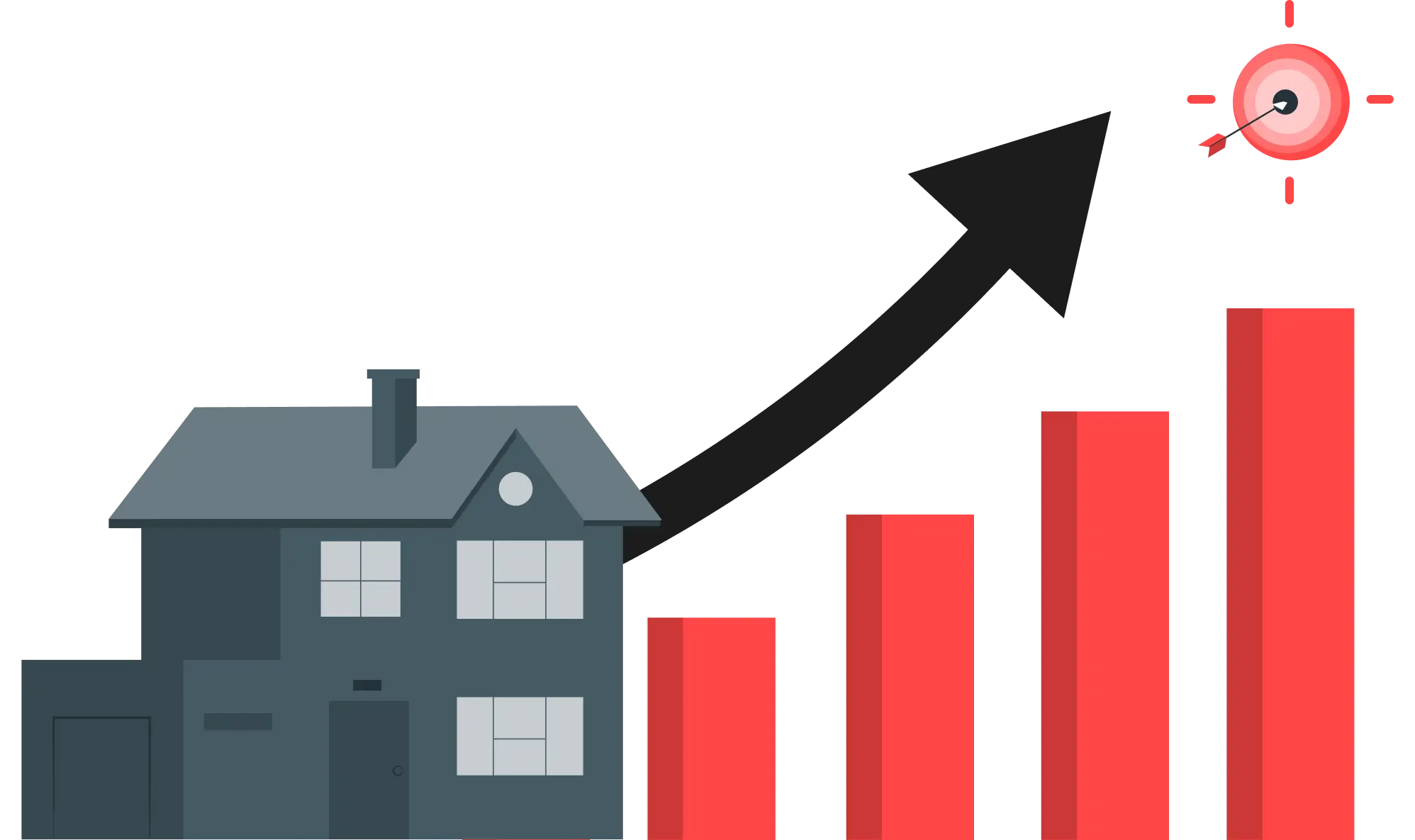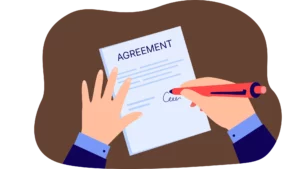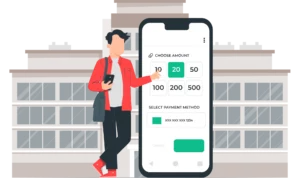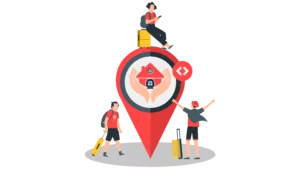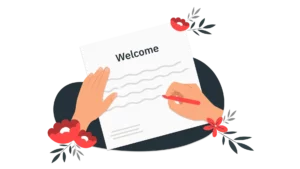Updated: August 20, 2024
Direct booking websites help you establish your brand as an expert in your locality and also help you bypass third-party OTAs for bookings. When you are reliant on OTAs for bookings, you also lose revenue in commissions. With direct booking websites, you can also build strong relationships with your guests.
Myths Associated With Direct Booking Websites?
1. You have to choose between an OTA or a direct booking website
Absolutely not! You should list on multiple OTAs while also encouraging direct bookings. It is never a good idea to put all your eggs in one basket. Your guests might search on OTAs, search for your dedicated website, and then book directly if they see a better offer on your direct booking website. The more options you provide your guests to book with, the higher the chances of getting a booking.
2. Direct Bookings = Reduced Profits
Let’s compare costs of a booking via OTAs and direct bookings with an assumption that your nightly rate is $200 and the length of stay is 2.
| Direct booking | OTAs |
| Booking value = $400Tourist package (if any) cost after 20% discount = $160Overall cost = $400 + $160 = $560 | Booking value: $200*2 = $400 After 20% commission, revenue:=$400 – $80 = $320 |
| Revenue through direct booking = $560 | Revenue through OTA = $320 |
While there are other costs to account for, this example shows you have more control over packages and pricing when encouraging direct booking.
How to Build a Direct Booking Website?
Now that you’ve decided to create a short-term rental direct booking website, there are a few things you need to consider.
#1 Build your Brand
Before starting a direct booking website, build your brand. Leverage social media by regularly posting content showcasing your property’s great features.
How to build your brand:
- Understand your target audience and create content for them.
- Create a visually appealing and consistent logo, color scheme, and font style across all touchpoints.
- Develop a narrative highlighting your rental’s unique history, features, and experiences to connect emotionally with guests.
- Identify what sets your rental apart from competitors, like location, amenities, or special experiences.
- Document your brand’s visual and verbal elements to ensure consistency across marketing materials and touchpoints.
Monique Pomeroy, a Solutions Consultant at PriceLabs, runs the Vermont A-Frame. She creates amazing content about her property on her Instagram page and showcases the beautiful landscapes surrounding it on her website.


How PriceLabs helped The Vermont A-Frame to increase its occupancy to 85%?
Monique started seeing her major KPIs increase, such as occupancy, RevPAR, and length of stay. Her occupancy rate increased to 85%, RevPAR increased to $140, and Length of Stay increased to 3.2 nights.
Read the Full Story#2 Create a Website
Creating a website might be daunting if you’re not a tech-savvy host. Here are easy steps for you:
2.1 Buy a Domain Name
A domain name is your website’s name. It is everything that comes after ‘www’. Including the location as the keyword in your URL will help you rank better on Google search results.
For example, Thibault Masson, our Head of Product Marketing, is a vacation rental property owner and industry analyst.
This is his website for his properties in St. Barth – https://www.saintbarth.com/
This is his website for his properties in Bali – https://www.realbali.com/


2.2 Decide How You’re Going to Build Your Website
You can either build your website independently with a developer or use a website builder. Vacation rental website builders simplify creating a professional website, allowing you to focus on guest experiences rather than technical details. These platforms often come with pre-built templates and integrated booking systems, making managing reservations and promoting properties more efficient.
There are two ways to build a website: Do it yourself or with a developer.
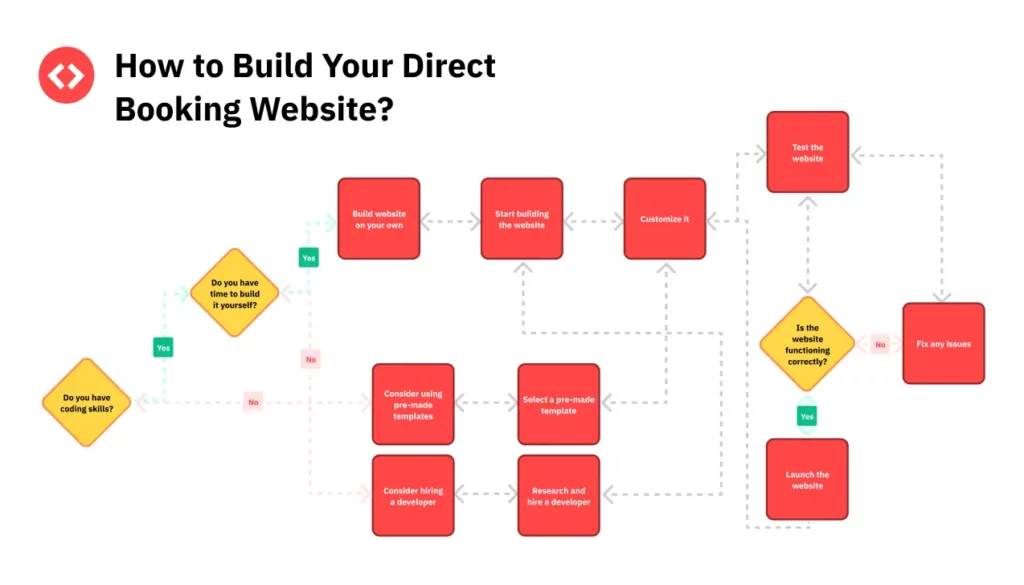

You can use vacation rental direct booking website builders such as Lodgify, Hospitable, FutureStay, OwnerRez, and more!
2.3 Outline your Website
You can either build a single-page website or a full-blown page; either way, you need to ensure the following points are covered:
2.3.1 User-Friendly Design
Your website should be intuitive and easy to navigate. Incorporate a clear “Book Now” button that stands out, allowing guests to make reservations effortlessly. The design should also be mobile-responsive, ensuring a seamless experience across all devices.
| Pro Tip: Place a “Book Now” button in the top right corner and embed the search box on multiple pages. This approach will provide guests with more opportunities to make reservations effortlessly. |
2.3.2 Engaging Content
Include high-quality photos and detailed descriptions of your properties. Showcase the unique features of each rental and highlight nearby attractions to entice potential guests.
2.3.3 Clear Booking Page and Widget
Your booking page must feature a user-friendly calendar for selecting dates and a secure payment portal. A direct booking widget can streamline the reservation process, making it easy for guests to complete their transactions in just a few steps.
2.3.4 Additional Pages to Consider
- Reviews or Testimonials: Showcase positive feedback from previous guests to enhance credibility.
- About Us: Share your story and what makes you a great host, keeping it concise and relevant.
- Listings: Create a dedicated page for all available rentals, allowing guests to filter by criteria like location and number of bedrooms.
- Gallery: Include a gallery page with more stunning photos of your properties.
- Location Information: Provide details about nearby attractions and reasons to visit the area.
- Social Media Integration: Add a widget to display your latest social media posts, keeping your content fresh and engaging.
#3 Decide your Revenue Management Strategy
3.1 Connect a Payment Processing Platform to your Direct Booking Website
A direct booking website must include booking and payment capabilities; otherwise, it will serve merely as an attractive brochure. The available payment options may vary depending on your location (for instance, Venmo is not widely used in the UK). Fees can differ based on the system, transaction type, and location. For example, Stripe fees start at 2.9%, Venmo for Business charges 1.9%, and PayPal fees begin at 3.40%.
3.2 Connect your Direct Booking Website to PriceLabs
Using the API key, connect your direct booking website to PriceLabs. Once you connect your website to PriceLabs, you can manage your property’s pricing dynamically using PriceLabs.
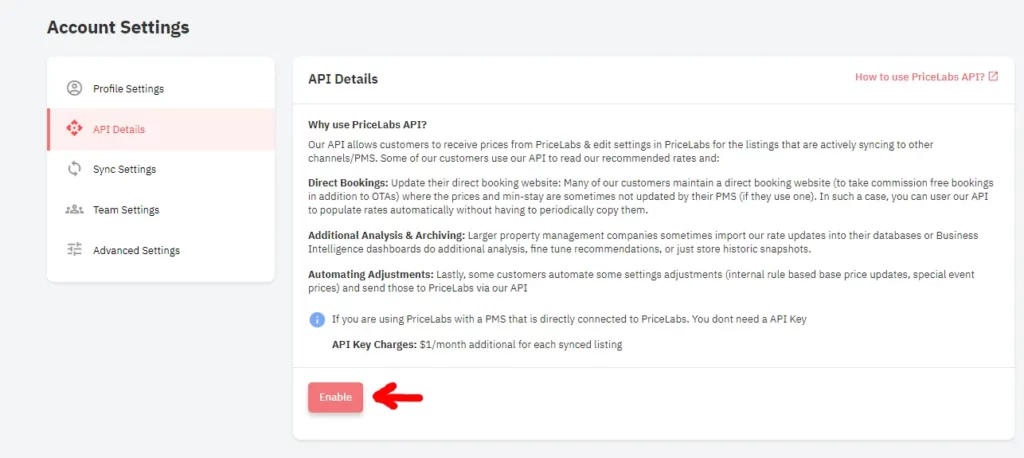

With PriceLabs, you can:
- Map all your booking channels – website and OTAs to reduce price parity between channels.
- Understand your guests’ booking patterns using metrics such as booking window and your historical data to tailor your pricing strategy effectively.
- Analyze market data, including seasonality, demand, local events, and competitor pricing, to dynamically adjust your rental rates.
- Control factors like seasonality, demand aggressiveness, occupancy-based pricing, and far-out and last-minute pricing.
About PriceLabs
PriceLabs is a revenue management solution for the short-term rental and hospitality industry, founded in 2014 and headquartered in Chicago, IL. Our platform helps individual hosts and hospitality professionals optimize their pricing and revenue management, adapting to changing market trends and occupancy levels.
With dynamic pricing, automation rules, and customizations, we manage pricing and minimum-stay restrictions for any portfolio size, with prices automatically uploaded to preferred channels such as Airbnb, Vrbo, and 110+ property management and channel integrations.
Every day, we price over 400,000+ listings globally across 135+ countries, offering world-class tools like the Base Price Help and Minimum Stay Recommendation Engine. Choose PriceLabs to increase revenue and streamline pricing and revenue management. Sign up for a free trial at pricelabs.co today.
Key Takeaways:
- Higher Profit Margins: Direct bookings eliminate hefty commission fees, significantly boosting profitability.
- Enhanced Guest Relationships: Direct communication facilitates personalized service, fostering robust relationships and repeat bookings.
- Control Over Brand Image: Managing direct bookings ensures consistency in branding and service quality.
- Increased Revenue Potential: Direct bookings often yield higher rates and longer stays, maximizing revenue per booking.
- Effective Marketing Strategies: Leveraging OTAs, social media, email marketing, and local SEO can drive traffic and direct bookings.
Focusing on these aspects can enhance their direct booking strategies, improving profitability and guest satisfaction.


